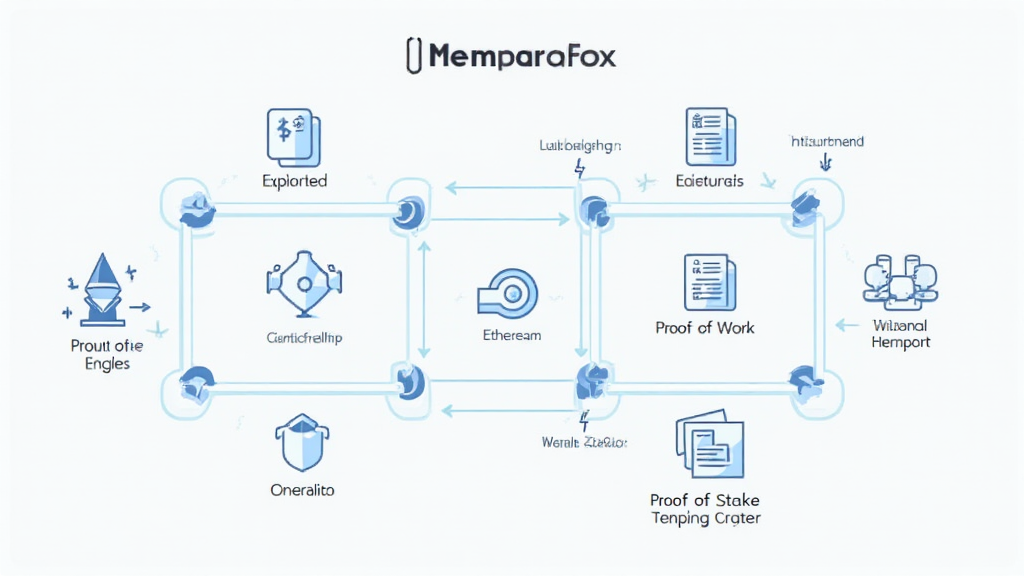Understanding Ethereum Consensus: Key Mechanisms and Future Directions
As the digital landscape evolves with an astounding surge of interest in blockchain technology, understanding the pivotal role of Ethereum consensus becomes crucial. With $4.1 billion lost to DeFi hacks in 2024 alone, the need for a robust and secure consensus mechanism cannot be overstated. This article aims to break down the various consensus models employed by Ethereum, their vulnerabilities, and their implications for the future of digital assets.
What is Ethereum Consensus?
At its core, Ethereum consensus refers to the protocols that enable nodes on the Ethereum network to agree on the state of the blockchain. This agreement is essential for validating transactions and maintaining blockchain integrity. There are several consensus mechanisms, with Proof of Work (PoW) and Proof of Stake (PoS) being the most prominent.
The Journey from PoW to PoS
Originally, Ethereum utilized the Proof of Work mechanism, akin to Bitcoin, where miners solve complex mathematical puzzles to validate transactions. However, this method is often criticized for its significant energy consumption.

- Environmental Concerns: PoW consumes enormous amounts of energy, raising issues around sustainability.
- Scalability: PoW often struggles to handle the increasing number of transactions, resulting in slower processing times.
To address these issues, Ethereum transitioned to the Proof of Stake mechanism with the launch of Ethereum 2.0. In PoS, validators are chosen to create new blocks based on the amount of cryptocurrency they hold and are willing to ‘stake’ as collateral. This shift aims to enhance scalability and reduce the environmental impact.
How Does Proof of Stake Work?
In the world of Ethereum, here’s how PoS operates:
- Validators are required to lock up a certain amount of Ethereum (ETH) as collateral.
- They are randomly selected to validate transactions and create new blocks.
- If they act maliciously, they risk losing their staked ETH.
This mechanism not only enhances security but also encourages participants to act honestly, as their stakes are at risk.
Consensus Mechanism Vulnerabilities
While Ethereum’s consensus mechanisms have advanced, they are not without vulnerabilities. For instance, the shift to PoS still poses risks, particularly related to the centralization of power.
- Centralization Risks: As wealth accumulates, larger stakeholders may dominate the validation process, creating an imbalance.
- Long-Range Attacks: A significant attack vector in PoS systems where an attacker could create a competing chain.
Real-World Applications of Ethereum Consensus
Understanding how Ethereum consensus facilitates various applications in the real world is essential for grasping its significance:
- DeFi Platforms: Decentralized finance platforms leverage Ethereum’s consensus to ensure secure and transparent transactions.
- NFT Marketplaces: Non-Fungible Tokens often operate on Ethereum, relying on its robust consensus to verify ownership and transaction history.
According to recent data, the growth of DeFi platforms, especially in regions like Vietnam, showcases the increasing reliance on Ethereum’s secure consensus mechanisms.
The Future of Ethereum Consensus
The future of Ethereum consensus is bright but must navigate several challenges. Innovations in consensus protocols, including layer-2 solutions, provide additional scalability while enhancing security.
- Layer-2 Solutions: Technologies like Rollups aim to process transactions off the main chain, reducing congestion.
- Compliance and Regulation: As governments establish clearer frameworks, Ethereum must adapt its consensus mechanisms to meet compliance standards, especially in emerging markets like Vietnam where crypto regulations are evolving.
By 2025, it’s predicted that Ethereum’s adoption will grow exponentially, particularly in Southeast Asia, reflecting a user growth rate of over 60% in Vietnam alone.
Enhancing Security with Ethereum Consensus
For those interested in security, understanding the mechanisms behind Ethereum’s consensus can provide significant insights:
- Implement robust security measures, such as using hardware wallets like Ledger Nano X that greatly reduce the risk of hacks.
- Regularly update your knowledge about emerging vulnerabilities in consensus mechanisms.
As the landscape changes, staying informed becomes vital for optimizing security in digital asset management.
Conclusion
Through understanding and navigating the complexities of Ethereum consensus, users can better protect their digital assets. As the blockchain evolves, adopting the right consensus mechanism becomes increasingly critical for maintaining integrity and security.
The continuous improvements and shifts in consensus mechanisms not only shape Ethereum’s future but the entire digital asset ecosystem. As such, remaining vigilant and informed about these changes is crucial for anyone involved in cryptocurrencies, especially within dynamic markets like Vietnam.
For more information on Ethereum consensus and its impact, visit mycryptodictionary today.





